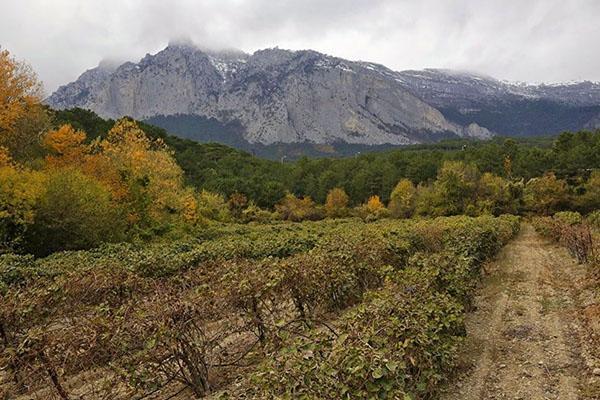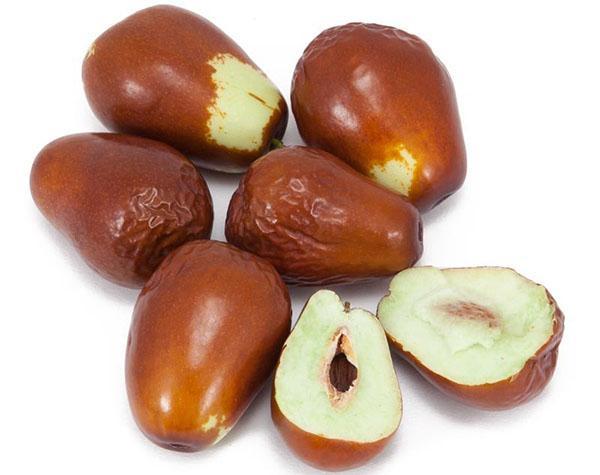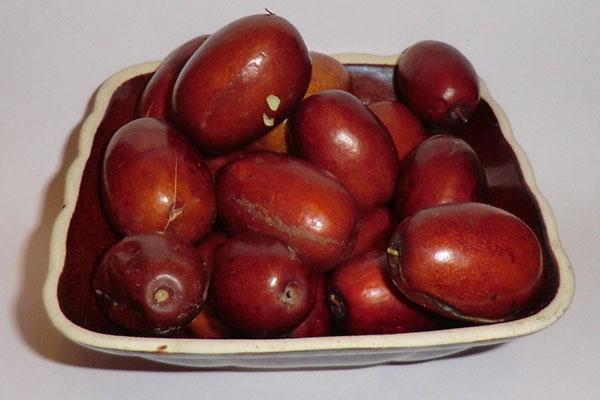Planting ziziphus at their summer cottage
 Ziziphus grows naturally in Asian countries. This culture is very drought-resistant and unpretentious to care for. Due to its sweet fruits and high yields, the Chinese date quickly spread to the Americas and the Mediterranean. In Japan, this culture is usually called "unabi", in other countries it is called "jujuba".
Ziziphus grows naturally in Asian countries. This culture is very drought-resistant and unpretentious to care for. Due to its sweet fruits and high yields, the Chinese date quickly spread to the Americas and the Mediterranean. In Japan, this culture is usually called "unabi", in other countries it is called "jujuba".
In 2016, on the southern coast of Crimea, a plantation of exotic trees was established, which occupied almost 6 hectares. Growing and caring for ziphus in the Crimea does not present any particular difficulties, since the climatic conditions of the peninsula are completely suitable for the growth and fruiting of the Chinese date.
Useful properties of ziziphus

In the CIS countries, the Chinese date is not widespread. It is grown in some summer cottages, the owners of which are fond of exotic. Therefore, not many gardeners know what a ziziphus is. This is a very useful plant, the fruits of which are widely used in the treatment of many diseases.
The birthplace of the jujub is China, where the fruits of this culture are used in folk medicine. The beneficial properties of the fruit have been noticed since ancient times.
The Chinese date is called "breast berry" because it treats lung and heart diseases.
In the sanatoriums of Yalta, the fruits of the Chinese date are used to successfully treat hypertension. Unabi fruits contain a large amount of magnesium and potassium, so their use has a positive effect on the heart muscle.
Daily consumption of 200-300 g of ziziphus for three months relieves heart and headaches, and also lowers blood cholesterol levels.
The advantages of ziziphus for gardeners
 Gardeners cultivate Chinese dates because of their high yields. An adult bush forms up to 300,000 flower buds. Even with poor pollination, a three-year-old shrub yields up to 15 kg of berries. If you plant several bushes on the site, the yield will increase manifold due to cross-pollination. An adult ziziphus bears up to 50 kg of fruits.
Gardeners cultivate Chinese dates because of their high yields. An adult bush forms up to 300,000 flower buds. Even with poor pollination, a three-year-old shrub yields up to 15 kg of berries. If you plant several bushes on the site, the yield will increase manifold due to cross-pollination. An adult ziziphus bears up to 50 kg of fruits.
The root system of the Chinese date extends into the soil up to 3 m, so the plant can do without watering for a long time. The bush receives all the necessary moisture from the soil. Among the advantages of unabi are:
- high immunity to viral and fungal diseases;
- the ability to absorb nutrients even from poor soils;
- the jujuba bush releases a large amount of phytoncides.
 Planting and growing ziziphus is no different from most garden plants. The main condition for the rooting and survival of a seedling is to find a suitable place for this culture.
Planting and growing ziziphus is no different from most garden plants. The main condition for the rooting and survival of a seedling is to find a suitable place for this culture.
It is important to remember that the ziziphus bush, although unpretentious to the composition of the soil, the plant responds well to feeding. You can plant a seedling in a sandy loam fertile soil, the plant takes root well on crushed stone aerated soils.
Place for planting ziziphus
 Ziziphus is a light-loving plant, so you need to choose a sunny place to plant it. Even with the slightest shading of the plant, its yield drops significantly.
Ziziphus is a light-loving plant, so you need to choose a sunny place to plant it. Even with the slightest shading of the plant, its yield drops significantly.
The root system of the shrub is very developed. In the first year after planting a seedling or a grafted seedling in open ground, the growth of the aboveground part of the plant slows down significantly.All nutrients ziziphus unabi spends on the development of the root system. The adventitious roots spread 7 m around the shrub.
Due to the developed central root, the jujuba cannot be planted in wetlands and in areas where groundwater is located close to the soil surface. The root system of the bush rots during stagnant water.
The aerial part of the plant begins intensive development in the second year after planting. On fertile soil, the shrub will bloom in June of the same year, but the fruits will form only in the third year.
Planting unabi in open ground
 Planting and growing ziziphus does not differ from planting the usual fruit crops. A planting hole is dug under a seedling or a plant grafted onto a wild stock. It is filled with a mixture of garden soil and leaf compost in equal proportions.
Planting and growing ziziphus does not differ from planting the usual fruit crops. A planting hole is dug under a seedling or a plant grafted onto a wild stock. It is filled with a mixture of garden soil and leaf compost in equal proportions.
The metabolism of the Chinese date is very slow, so the vegetative buds bloom on the May holidays. A plant with an open root system is planted in the ground in late May or early June.
When transplanting a seedling into open ground, the root collar of the plant is not buried. In this case, the jujuba will give a large amount of growth that can be used to propagate this culture.
If you are planting a cultivar of Ziziphus grafted onto a wild stock on the site, do not be afraid to deepen the root collar. Unlike the rest fruit trees this will not affect the yield of Chinese dates, but will only benefit:
- By deepening the grafted plant by 40-50 cm, you will get rid of wild thorny growth.
- Jujuba can withstand frosts up to 25 ° С. If, nevertheless, the aboveground part of the buried plant freezes out, the cultivated bole located in the ground will not suffer and will give new shoots. You can re-form the crown from them.
- The cultivated plant stem will put down new adventitious roots. If shoots go from them, it will be varietal and suitable for reproduction.
After planting ziziphus unabi in open ground and its first flowering, you can start forming the crown of the plant.
Pruning and shaping the crown of a Chinese date
 Ziziphus has a strong immune system, so the plant is not prone to being affected by fungal and viral diseases. Only formative pruning is carried out: branches that grow inside the crown are removed.
Ziziphus has a strong immune system, so the plant is not prone to being affected by fungal and viral diseases. Only formative pruning is carried out: branches that grow inside the crown are removed.
There are two ways to form the crown of a plant: as a ziziphus tree and as a shrub. In the first case, remove all shoots on the main trunk, leaving three to four skeletal branches at a height of 50 cm from the soil surface. With the second method of formation, the lower branches are not completely cut off, but only shortened, giving the bush a neat shape.